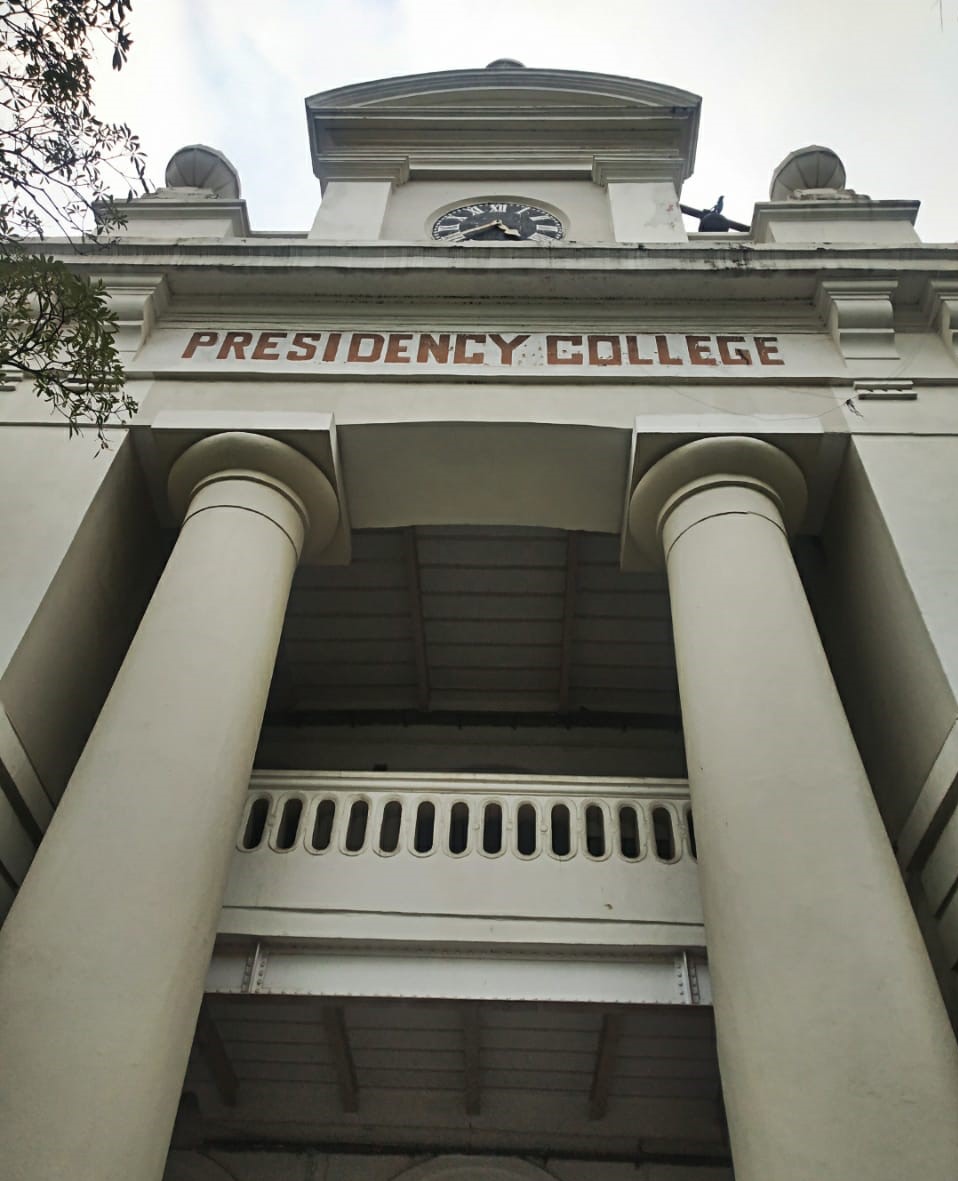Twish Mukherjee
(This guest article tries to understand the protests by Bahujan students in JNU and other universities over Durga Puja and the demonizing of Mahisha and other Dalitbahujan personalities in Brahmanic mythology. These protests picked up steam around a year ago in JNU, and this article in Round Table India had covered the protests and featured the documentary ‘Durga ka Mithak aur Bahujan Sangharsh ki Gatha: a documentary’ by Neel Kranti Media. We are re-posting the new version of the video at the end of this article)

History repeats itself. Also, it is written by the winner. Then, the question comes: why have the winners been the same set of people all throughout the generations of scholars and researchers and other history-chroniclers? If nature had its own way of designing destinies, both the sides in a multi-episode war ought to have won at least a few times each, respectively, if not alternatively. But, what happens when you win once, by hook or by crook, and then stop the opponent from ever trying to hit you back, by killing them softly and silently, and exterminating all their descendants at their very birth?
Soon, no one remembers the truth. Thus, a myth is born.
I remember seeing pictures of Radha and Krishna as a child and thinking of them as the ideal couple. When I got to know near the beginning of my adolescence that Krishna had, in fact, a few other wives, and Radha was not only married to someone else, but also some kind of aunt in relation to Krishna, my utopian dreams of having a normal life myself were shattered for the first time. Same happened with the chronicle of Rama and Sita, when I found out about the latter having to prove her loyalty before the fire. I began to doubt if Rama loved Sita at all, or whether she was just another achievement for him. Needless to say, as a 14 year old kid, I thought that my parents too, must be evil, vile, scheming people, married to each other for purposes other than love or family.
 That was just the beginning of a long journey of questioning, rejecting, and re-questioning everything that education had to offer me. My recent interaction with the students of Jawaharlal Nehru University at New Delhi added one more item in my ‘To Question’ list: the Mahishasura, or the personification of all that is Evil, whom we have been taught to hate, whose brutal death we have been taught to celebrate, whose beautiful murderess we have been taught to worship, notwithstanding the fact that I’m still in a country like India where the Father of the Nation endorsed non-violence till his last breath. Yet, we watch the serene face of the fair complexioned murderess, and the expression of unspoken angst on her dark-complexioned fiery victim, and think to ourselves that we are in the presence of something supremely divine.
That was just the beginning of a long journey of questioning, rejecting, and re-questioning everything that education had to offer me. My recent interaction with the students of Jawaharlal Nehru University at New Delhi added one more item in my ‘To Question’ list: the Mahishasura, or the personification of all that is Evil, whom we have been taught to hate, whose brutal death we have been taught to celebrate, whose beautiful murderess we have been taught to worship, notwithstanding the fact that I’m still in a country like India where the Father of the Nation endorsed non-violence till his last breath. Yet, we watch the serene face of the fair complexioned murderess, and the expression of unspoken angst on her dark-complexioned fiery victim, and think to ourselves that we are in the presence of something supremely divine.
Durga Puja or the Navratri is a commercial activity in a large part of India. Dusshera or the tenth day of the same festivity is celebrated almost all throughout the rest of the country. Whether one is an atheist or a deeply religious Hindu, or subscribers of some other religious faith, this festival affects the lives of all living Indians, here or abroad, at least for twenty four hours in a year. I cannot, and I am not asking people to stop spending crores on worshipping gods and goddesses instead of feeding the starved millions, because I am aware of the temporary employment generation that such extravagant celebrations create. But, I am, definitely, asking all those who occasionally indulge in some analytical thinking, to start questioning the very validity of the mythology that leads to this country-wide carnival. I am asking you to question the implications and explications of the image or imagery that we worship, and why. I am asking you to question the status quo depicted therein.
In July 2011, a hardly-heard-of magazine called Yadav Shakti, published by Chandra Bhushan Yadav, made a few people aware of the alternate narrative of the story of Devi Durga and her ‘victory’ over the buffalo-demon. Soon after, in October of the same year, a bilingual magazine, FORWARD PRESS published an article by the well-known Prem Kumar Mani wherein the very Indian concept of Devi or Shakti is examined and an attempt to explore all the parallel narratives is made. Here is the most relevant excerpt from the same:
“The Shudra (and perhaps the unadulterated) reading of Mahishasur–Durga story goes like this. Mahish means buffalo. Mahishasur means the Buffalo Demon. Demon (asur) is different from god (sur). Sur means god. God means Brahmin or Swarna (upper caste). Surs do not work. Asur means those who work – in today’s parlance, workers. Mahishasur means people who rear buffalo, the buffalo-rearers. Those who trade in milk, the dairy people. Asur may have changed to Ahur and then to Ahir (the present-day milkman caste). Mahishasur or the buffalo-rearers must have been the people dominating the Banga region. Racially they must have been Dravidians. They must have also been opponents of the Aryan culture. Aryans had to defeat them. These people used Durga. In the Banga region, prostitutes mention Durga to be of their clan. Even today when one makes the Durga idol, some soil must be brought from the house of a prostitute. It took Durga nine nights to kill Mahishasur. The Brahmins who sent her waited nine nights with bated breath. This was a difficult task. If not force, deception. Force of deception. On the ninth night Durga tasted success, she killed Mahishasur. As they heard the news, the Aryans (Brahmins) were all agog. They swooped at Mahishasur’s people and cutting their heads (munda) off made a new kind of garland. They put this garland around Durga’s neck. Even Indra couldn’t do what Durga had done.”
This year, we got to know another nudging-you-awake fact that descendants of the Asura clan are still alive, though on the brink of extinction. They are tribal people from Jharkhand, though a few of them can be found in Chhattisgarh and West Bengal too. Writer and poet Ashwini Kumar Pankaj uploaded on his YouTube channel some poetry written and recited by Sushma Asur, who belongs to the same tribe, which had laid the foundations of the iron and steel industry in this country, by giving us the most ancient form of smelting iron.
 To say that it’s outrageous would be an understatement. I, for one, have been born to a Brahmin family, but felt all my life that I should have belonged to the ‘warriors’ and not the ‘learned men’. So, given how confused I am about my own identity, I cannot adhere to the views and beliefs of any community whatsoever, my restlessness getting the better of me at every sight of conviction. When I met the All India Backward Students Forum members at JNU recently, I was unsure about how I would react to their ‘extremist’ perspective. But, strangely, I became very good friends with them, within the course of a few hours. They just said to me that it’s not a matter of who represents ‘good’ and who represents ‘evil’; only thinking makes things appear as good or evil, like I always believed personally. Thinking, like I always believed, is governed by education and upbringing; which again, is governed by the ones in power who decide what should be imparted and how.
To say that it’s outrageous would be an understatement. I, for one, have been born to a Brahmin family, but felt all my life that I should have belonged to the ‘warriors’ and not the ‘learned men’. So, given how confused I am about my own identity, I cannot adhere to the views and beliefs of any community whatsoever, my restlessness getting the better of me at every sight of conviction. When I met the All India Backward Students Forum members at JNU recently, I was unsure about how I would react to their ‘extremist’ perspective. But, strangely, I became very good friends with them, within the course of a few hours. They just said to me that it’s not a matter of who represents ‘good’ and who represents ‘evil’; only thinking makes things appear as good or evil, like I always believed personally. Thinking, like I always believed, is governed by education and upbringing; which again, is governed by the ones in power who decide what should be imparted and how.
If the descendants of the winner can celebrate ‘victory’ as they do on Vijaya Dashami or Dusshera, the descendants of the loser, the gallant man who sacrificed his life in his fight for the rights of his kingdom’s citizens, should be allowed to observe their own annual ‘day’ too. It is an insult to the major population of this country to have a national festival and legally so, which celebrates the death or murder of a man who represents them in every way! Why the statistical majority of our population is ‘backward’ and hence a ‘minority’ is another issue altogether that would take another few pages to analyse.
Since last year, a Mahishasur Shahadat Diwas is being held inside the JNU campus, despite opposition from Akhil Bharthiya Vidyarthi Parishad and hints of opposition from the administration, in some ways. According to some people from Jharkhand, where it is still celebrated by some tribal clans, the leftovers of Mahishasur’s army had dispersed after his death, and gathered together finally, on the night of the first full moon following the tragic loss. Accordingly, this year, the members of AIBSF at JNU will observe Mahishasur Shahadat Diwas on the 29th of October, beneath a sky lit by the full moon. Renowned academicians, journalists, writers, poets, teachers and thinkers joined in to celebrate the ‘day’.
Sometimes, there is no light at the end of the tunnel, because the end has been blocked by a concrete wall. Sometimes, the wall made of bricks is broken down because too many people were trying to do so for too long a time. Thus, the concept of ‘hope’ remains alive.
{youtube}4aq0Oyv5Nvw{/youtube}
Twish Mukherjee is a young poet and filmmaker from Kolkata, currently based in Delhi, who is working with FORWARD PRESS as Sub Editor (Web) and a children’s newspaper called The Little Messenger as Graphics Designer & Sub Editor.
~~~









